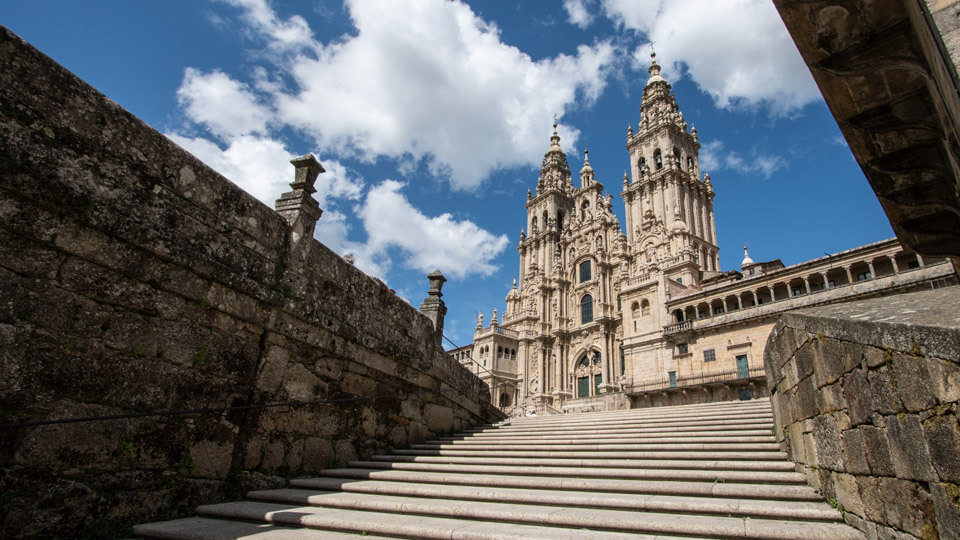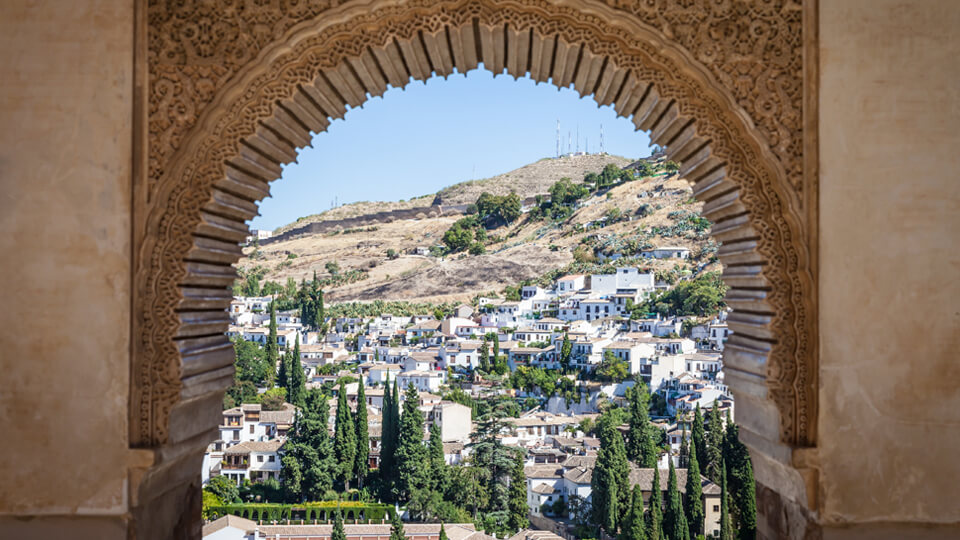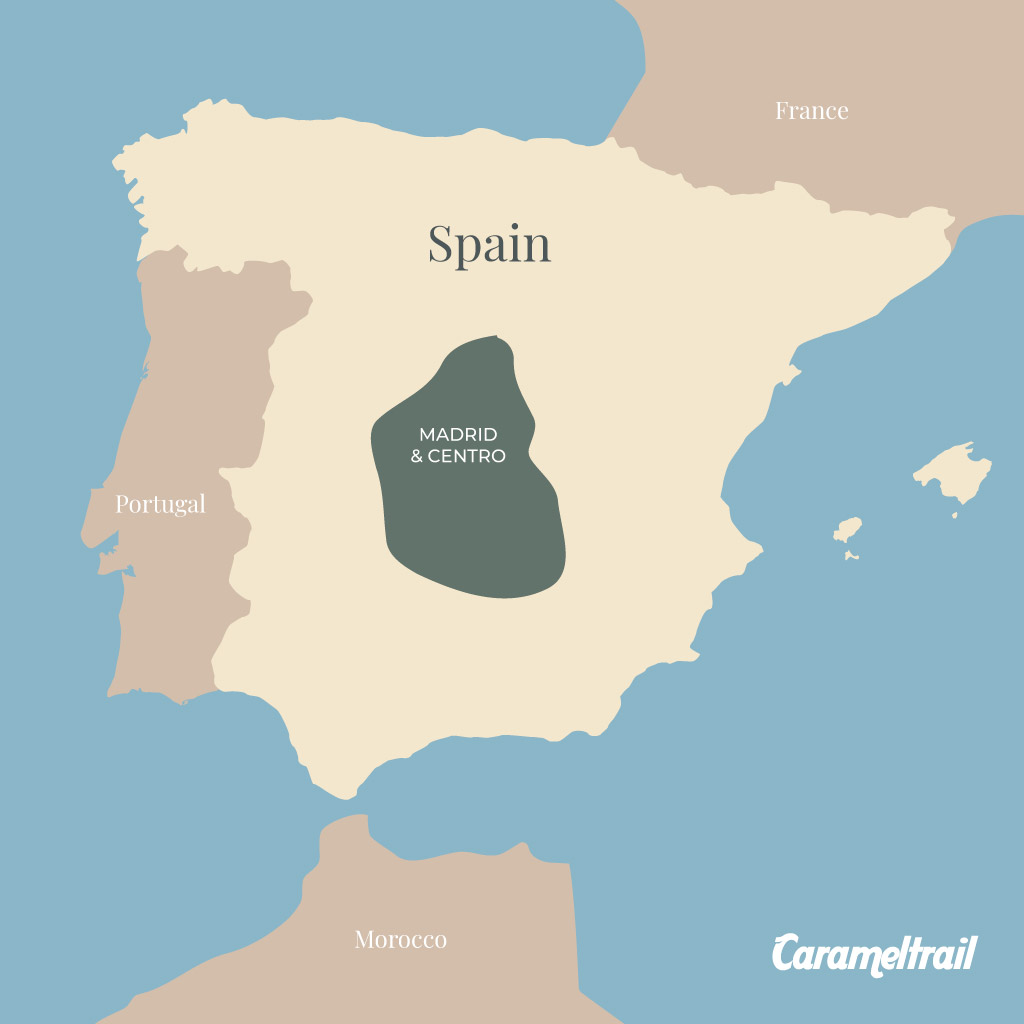
The Alcazar and The roman aqueduct of Segovia Spain
Did you know that Spain has 15 World Heritage cities? Segovia is one of these cities recognized for its Roman aqueduct, the buildings, the squares, the streets, the patios and all the history behind the territory of Castilla y León.
Do you want to explore it? Luckily for you, Carameltrail can help you organize the best trip ever!
SEGOVIA SPAIN
Segovia is a city with unique monuments that make the visit well worthwhile. However, you will find the city offers much, much more. An old Jewish quarter, stately homes, outstanding views and a green belt which is ideal for a pleasant stroll in the sunshine.
The Roman aqueduct of Segovia, probably built c. A.D. 50, is remarkably well preserved. This impressive construction is part of this magnificent historic city. The aqueduct is one of the most impressive legacies that the Roman Empire has brought in Spain.
The apse of the cathedral of Segovia marks the boundaries between the Plaza Mayor and the Judería Vieja (Old Jewish Quarter). Inside this remarkable cathedral, you will find 16th-century-stained glass windows and the Altarpiece which were designed by Sabatini and are very fascinating to see.
From the Alcazar there are amazing views over the Pinarillo, and the Church of Vera Cruz.

ONE DAY IN SEGOVIA SPAIN
One major highlight includes an Alcazar where the old kings of Castile lived, as well as the last Gothic cathedral built in Spain.
Segovia is world famous for being home to one of the most impressive Roman aqueducts remaining today
This old town also features an assortment of churches, monasteries and museums if you have some extra time.
Here are the things you can’t miss on your Segovia Day Trip:
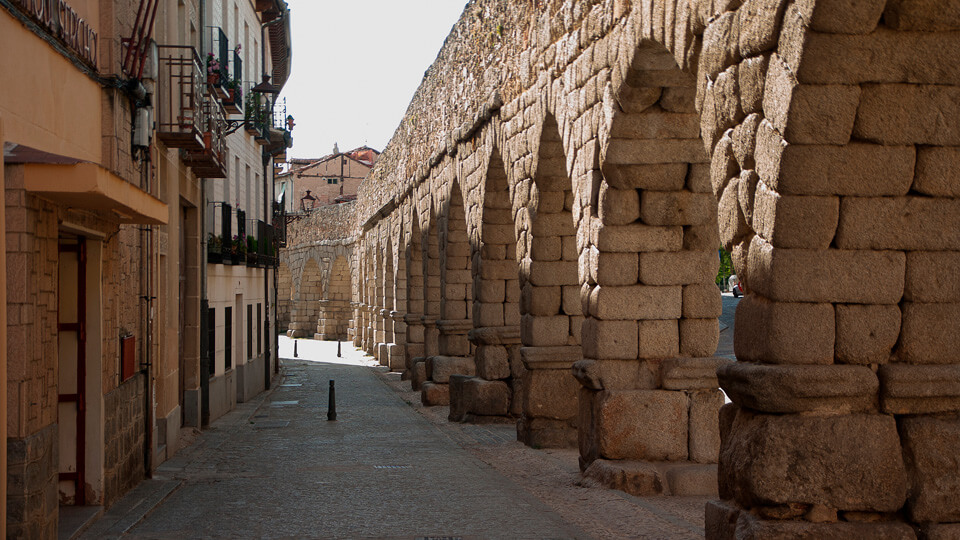
THE AQUEDUCT OF SEGOVIA
Have you ever seen an aqueduct in the middle of a city? This is a pleasure that awaits you in Segovia.
The first and main stop is obviously the aqueduct, both stunning and unique. It was built by the Romans with the main function of transporting water from the mountains to the city. The most popular part of the aqueduct is located in the Azoguejo square and is the perfect place for admiring the architecture and taking good pictures, and also is a great spot from where to enter to the historic part of the city.
With 167 arches, the “Acueducto de Segovia” was built with solid blocks of stone and no mortar and it runs for over 10 kilometres before it reaches the city, dividing it in two, with the Plaza del Azoguejo on one side, and the Plaza de la Artillería on the other.
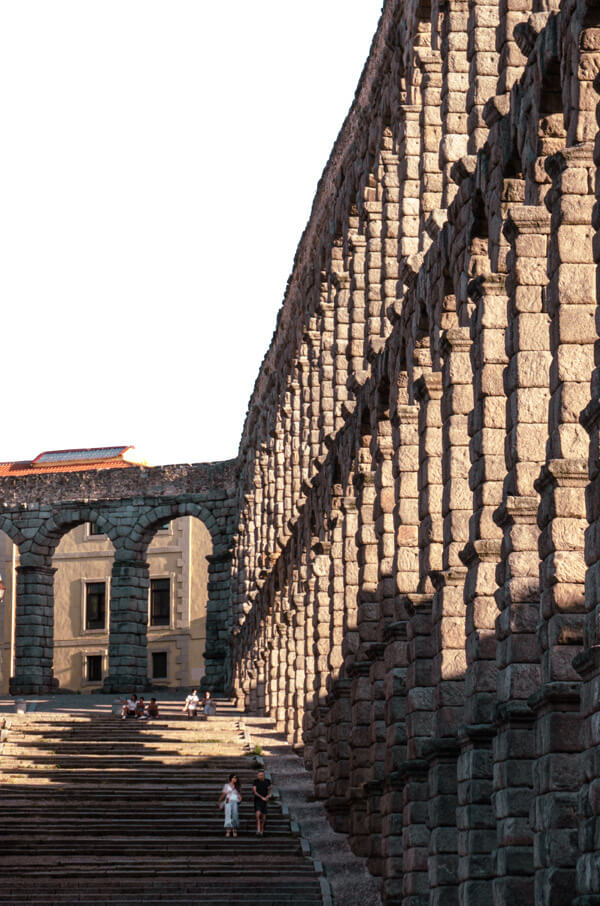
When was the aqueduct of Segovia built?
The Aqueduct of Segovia was built during the second half of the 1st century A.D. and supplied water from the Frío River to the city until the 20th century. It still conveys its original character and remains a prominent and important feature of the regional landscape. It represents both the expansion of the Roman Empire during the 1st century A.D. and the attention to aesthetics and functionality that are so strongly associated with the engineering of the Roman world.
The Aqueduct of Segovia must have been one of the largest aqueducts in the Roman world
Who built the aqueduct of Segovia?
The aqueduct is thought to have been built during the Flavian dynasty, from the second half of the first century to the early 2nd century under the Emperors Vespasian and Trajan. This impressive work of engineering begins near the Palace of La Granja, with single arches bringing the water to the tank known as El Caserón. Then, a stonework channel carries it to a second tower, and when it arrives at Plaza de Díaz Sanz, it begins to form two monumental rows of arches, one on top of the other.


THE ALCAZAR: SEGOVIA’S CASTLE
In a high spot of Segovia lays the amazing Alcazar, a stunning castle that´s definitely worth visiting. This building has been a fortress, a royal palace, a prison and many other things and nowadays it represents the history and the Art of Segovia.
The Alcazar – which means palace or fortress in Arabic – is one of Spain’s most dazzling and romantic royal residences. This Alcazar in particular served as inspiration for Walt Disney when he was dreaming up his famous theme of park castles.
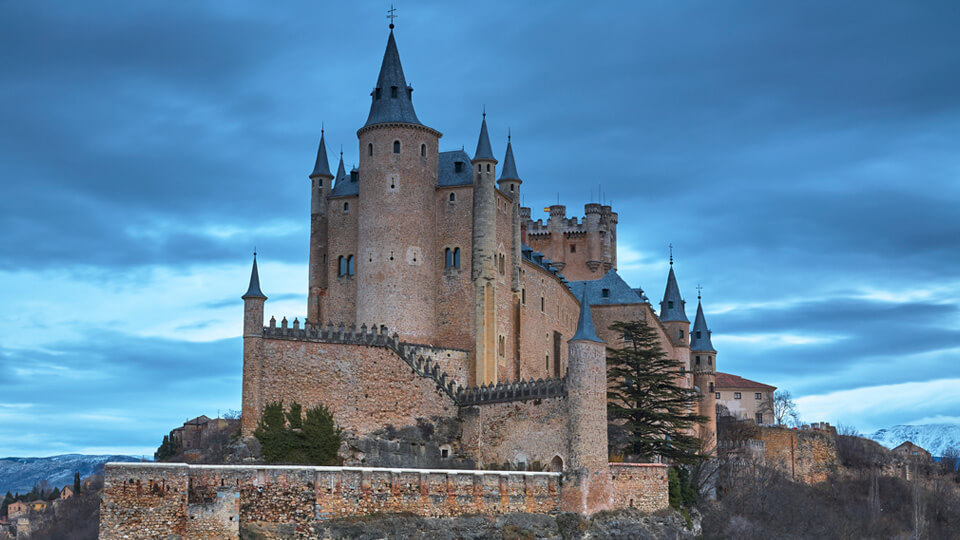
This monolithic structure was the home to many notable royal families of Europe including members of the House of Burgundy, Trastamara, the Habsburgs, and the Bourbons.
Alcazar de Segovia is one of Spain’s most visited historical and cultural sites and with just one look at this imposing ship-shaped structure, you’ll understand why.
Segovia has a wonderful relaxing vibe you will enjoy at the fullest!
SEGOVIA CATHEDRAL
The Cathedral of Segovia, also known as the grand dame of cathedrals, stands in the Plaza Mayor. As you step inside, you’ll see the light stream through the huge stained-glass windows, flooding the rooms with a hundred different colors.
Inside you’ll see the chapel of La Concepción and its great oil paintings such as The Tree of Life.
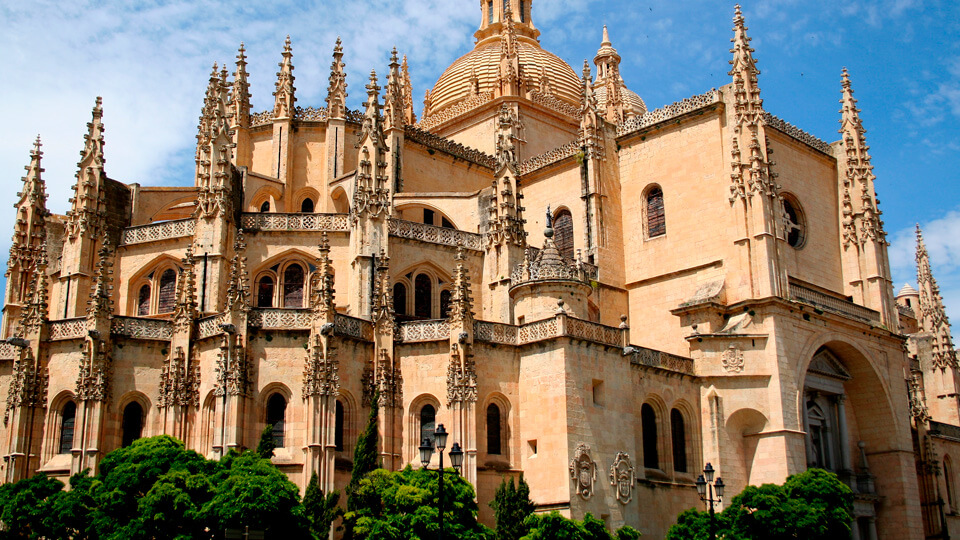
You’ll continue your way through the cloister, the chapter house and finally to the Carroza del Corpus Christi. And if you’re feeling fearless, arrange a nocturnal visit to one of the towers and you’ll discover all of Segovia’s hidden cultural secrets.
EAT COCHINILLO (SUCKLING PIG) IN SEGOVIA
Roast suckling pig is a pretty big deal in Segovia.
By taking this tour with us, after visiting Segovia, you will stop to have a traditional lunch at La Granja. The region is known for the suckling pig and also for its “judiones”.
The roast suckling pig is part of the Castilian cuisine since the invasion of the Roman Empire to the lands of Hispania. It is one of the great legacies that the Roman invasion left us, along with the wine.


The roast suckling pig became popular in the taverns and banks of the Castilian zone in the 17th century when it was offered to the travelers who were heading to the court.
The Segovian piglet recipe is very simple, using only water and salt, enhancing this way its natural flavor. Finally, to show his tenderness, the Segovian piglet is parted with the song of a dish that later is broken in front of you.
JOIN AN ENCHANTING DAY TRIP MADRID TO SEGOVIA
A day trip to Segovia, Spain.
A day trip to Segovia, Spain, is a perfect way to see the sites that make this small city so famous. From the imposing aqueduct to the enchanting Alcazar, you can make the most of your time here because the main attractions are within walking distance of each other.
It’s also easy to see the highlights in just a few hours, which makes Segovia an ideal option for a day trip from Madrid. What are you waiting for? Start booking your trip!


